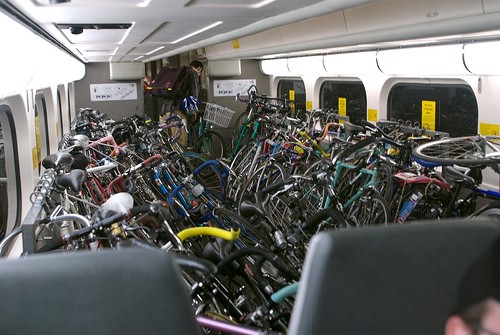While it’s great that San Jose’s funding priorities for the county include $1.5bn in funding for extending BART, it’s somewhat unfathomable to me that they also include $650m for building new highway interchanges. As anyone who’s played Cities: Skylines knows, building more roads doesn’t reduce traffic. It just moves it around.
The Bay Area’s (and indeed, anywhere in the US’s) public transit system is pretty woeful in comparison to most European cities. It’s nigh impossible to navigate the peninsula or the South Bay without a car. Caltrain regularly has delays of over an hour, and doesn’t have the capacity to hold all the bicycles that want to be on it. People want to ride the train.

One of the most critical things Caltrain could do to improve is to separate grades. All through the peninsula, giant hunks of metal moving at 50mph fly through intersections at the same level as the road. Unsurprisingly, this tends to cause accidents.
The San Bruno grade separation project cost $155m for grade separation over three previously street-level crossings, plus a new station. At a guess, there are about 4 rail crossings between each station from Millbrae to Santa Clara, which is 17 stations. Let’s say that in the San Bruno project, $50m of that was allocated towards the station itself, and $100m to the elevation of the tracks. That gives us an average of $30m per separated rail crossing. At 4*17=68 crossings between Millbrae and Santa Clara, that’s a total of $2bn to completely separate grades along the length of Caltrain. For comparison, the electrification project has been allocated $1.7bn and is projected to complete by 2020. There are no further grade separations planned.